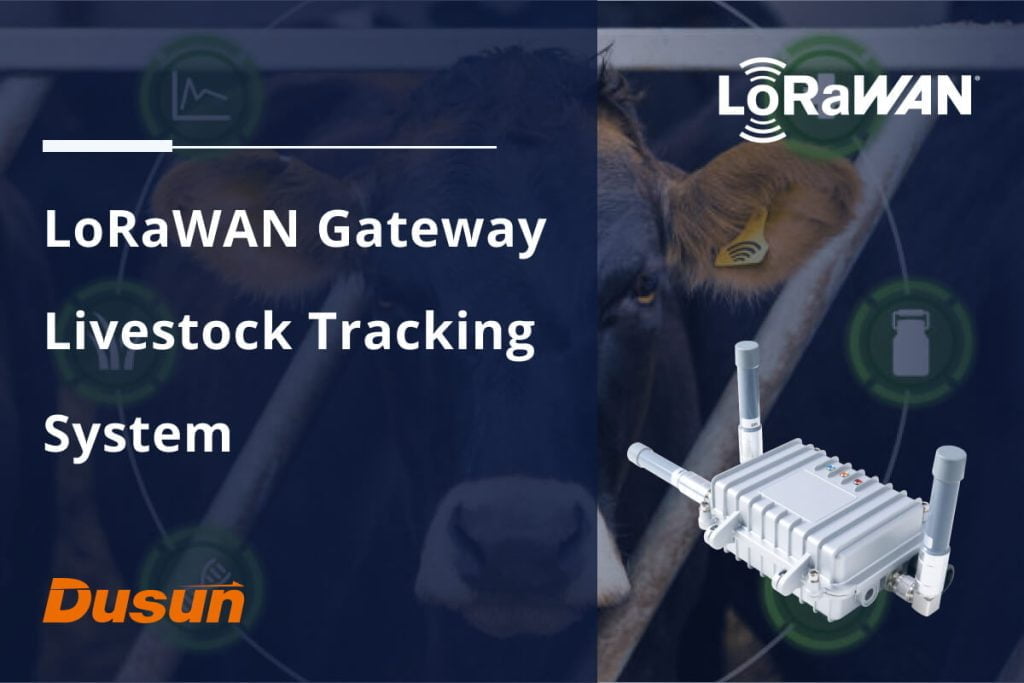Using LoRaWAN technology, farmers can immensely boost their livestock production enterprises, which allows low-power, long-distance communication for livestock tracking. Normally, farmers need to monitor a plethora of production variables to increase production efficiency. From feeding, breeding, and growth rate monitoring, to animal health the list is long. Of course, technology exists for tracking these production factors.
But technology is dynamic and farmers should adopt emerging innovations to streamline their production systems. Read on to learn all about smart livestock production leveraging IoT LoRaWAN gateway technology.
What Is LoRaWAN Technology?
LoRaWAN is a Low Power Wide Area Network(LPWAN) protocol using low radio waves to provide long-distance communication and data transmission. Data is transferred across the network from the sensors to the application devices.
While the LoRa Alliance defines its protocols, it operates on the license-free radio spectrum, making it open-source. That means it is free for use in any field including in smart livestock farming.
Unquestionably, the development of current technology has made it possible to automatically track and monitor livestock like cattle, and sheep. Utilizing technology like RFID, wireless sensor networks, and low power wide area networks (LPWAN), cattle and sheep can be tracked separately. Although RFID technology has a battery life of up to 15 years, its coverage cannot be perfect enough. Data can be sent through a sensor node in a wireless sensor network, but this demands a lot of power, and each node needs a GSM module, which must also be recharged at the same time as the battery.
LPWAN can be used to create a long-range, low-power system, which is exactly what is required. LoRa is such a wireless technology, which was created for low-power wide-area networks.
This innovation in wireless transmission technology allows for low-power, long-distance communication. With the help of LoRa technology, low-cost, low-weight tracking devices that can be installed on animals without endangering them can be made, allowing for the creation of virtual fences to contain farm animals.
How Does LoRaWAN Gateway Work in Livestock Monitoring System?
LoRaWAN technology networks can be used to monitor defined variables. It entails setting up sensors, gateways, networks, and mobile apps for data transferring data. With the network, you can collect information on location, health monitoring, animal health, and breeding.
A complete livestock tracking system is implemented with hardware and software, including LoRaWAN sensors, LoRaWAN gateways, network servers, and mobile apps.
All you need is to install sensors on the animal, usually as ear tags, and collars. Data signals are then sent in real-time to the LoRaWAN gateways for onward transmission to the cloud. Finally, the farmer can access all the information on a mobile phone-based application with the location of the animal and displays the surrounding conditions of the animal respectively.
The LoRaWAN gateway connects to the internet via high bandwidth networks like Wi-Fi, Ethernet, or cellular. Due to the additional fees associated with cellular subscriptions, the cellular connection is only used when a direct connection is unavailable.
Benefits of LoRaWAN Livestock Monitoring, Especially Cattle Tracking Systems
Use cases for LoRaWAN technology abound. Farmers can track lost animals, monitor estrus cycles, and track temperatures and feeding behavior among others.
Accurate and Timely Livestock Tracking
Locating animals in expansive ranches is a challenge. Sometimes animals may stray out of the designated zones, or even get lost. But with LoRaWAN tracking the animals is easy. Animals are fitted with GPS-powered sensors that can transfer data on their geolocation.
Easy Storage and Retrieval of Livestock Data
Farmers routinely track animal health indicators, feeding habits, and estrus cycles among others. Traditionally this process has largely been manual; use of ear tags, collars, and body markings. This has worked well but it can be improved by deploying modern network technologies such as LoRaWAN. With LoRaWAN, data storage, retrieval, and security are more efficient than the use of paperwork.
Automation of Livestock Management
Management of livestock is for the most part manual. However, some of these activities can be automated by leveraging the LoRaWAN protocol. Monitoring water levels in remote reservoirs, temperature regulation of poultry houses, and disease diagnosis among a few others can be automated. This frees the workers’ time for farm activities that can only be done manually.
Enhanced Livestock Security
With the use of LoRaWAN, you can have holistic farm security. This includes tracking lost or stray livestock, farm equipment, and fixed structures. In addition, you can mitigate the risk of hazards by installing fire sensors, gas sensors, and lightning sensors to protect livestock and human life.
Realtime Weather Tracking
Monitoring weather patterns is an essential consideration for every farmer. Whole herds can be in imminent danger of being in the wrong location in certain weather conditions. Young animals and poultry are particularly vulnerable to temperature and wind changes, and storms. Fortunately, with loRaWAN, these can easily be tracked and transmitted to the right person for timely action.
Challenges in the Use of LoRaWAN Technology in Smart Livestock Monitoring
The use of LoRaWAN in smart livestock production has its fair share of implementation bottlenecks. Nonetheless, the challenges can be mitigated with proper planning.
Objections to the New Technology
Manual livestock management methods such as ear tags, tattooing, branding, and the use of paperwork in tracking fertility records are more popular with some farmers. Though these methods are great, the deployment of technology can move it a notch higher. Unfortunately, some farmers wish to stick with the old methods. But with a proper demonstration of its efficacy, more farmers can adopt the LoRaWAN technology.
Cost of the LoRaWAN Technology
LoRaWan is a low-cost method compared to other tracking technology. However, it is still expensive compared to the traditional methods of collecting and storing information used on farms. For example, normal ear tags, breeding, and feeding tracking cards may not cost much. For that reason, there is a need to make the hardware cheaper for faster adoption in smart livestock farming.
Learning Curve Challenges
Tech is not every farmer’s cup of milk. Installing the LoRaWAN requires some level of IT knowledge. There is a need to simplify the installation process, to reduce the learning curve. Thus farmers will find it more userfriendly increasing the adoption rate.
Gaps in Data Transmission
One of the major challenges of LoRaWAN is the susceptibility of its frequencies to interference from external electronic installations. In addition, network hardware can get degraded by continuous exposure to the elements such as winds, rains, and UV sunlight rays. Not to mention the probability of ear tags and collars getting lost. All this can occasion the loss of data transmission.
Opportunities in the Use of LoRaWAN in Smart Livestock Monitoring
The future of LoRaWAN in smart livestock farming can only be better. More research has been deployed in this sector with the hope of great future results.
Incorporation of Cloud-Based Technology
LoRaWAN protocol can leverage other communication technologies such as 5G to strengthen smart livestock production. For example, with future innovations, there is a huge potential for tracking more complex parameters such as growth rates, weight gain, and facial identification.
Precision in Livestock Feeding, Breeding, and Animal Health
The use of AI in conjunction with the LoRaWAN technology will be the next frontier in smart livestock farming. Better precision in the oestrus cycle prediction, and timely disease diagnosis, will be achieved.
Improved Traceability of the Food Supply Chain
With global environmental pollution concerns, more people are concerned with the carbon footprints of the food they consume. With an increase in intelligent nodes, it will be more precise to map the animal products’ journey from the farm to the dinner table.
Final Thoughts
LoRaWAN technology holds great potential for smart livestock production. Farmers can use it to easily track a wide range of parameters as we found above. Plus it is a low-cost, low-energy technology that is easy to deploy and maintain.



















